The gas station of the future will have treadmills, gardens, and solar panels—but no gas
The gas station as we know it is an endangered species. As electric vehicles gradually make up a larger share of cars on the road, entirely new kinds of service stations will be needed to fuel their journeys. A new design competition has come up with a vision for what those stations may look like, and it’s funded by one of the biggest gas station companies in the world. Parkland, a Canada-based gas station operator with 3,000 locations in 25 countries, is the main sponsor of an international competition to create the electric fueling station of the future. The winning entry has just been announced, and the design envisions a facility where the time it takes to recharge a battery—easily a half hour longer than a typical gas fill-up—is seen as an opportunity to rest, relax, and maybe even explore. [Image: courtesy Electric Autonomy Canada]Next, Parkland wants to start building these stations. “We spend a lot of time thinking about where the industry is going, and there’s no question that mobility is starting to electrify,” says Darren Smart, Parkland’s senior vice president of strategy and corporate development. But when it comes to the customer experience of actually charging electric vehicles, Smart says, the industry is lagging. “Charging stations are located in uninteresting spots, they’re out of the way, and in some cases they may not be the safest locations. That is made all the worse by the fact that an EV driver needs to dwell at a location for 20 or 30 minutes to charge,” Smart says. “So it’s a bad combination.” [Image: courtesy Electric Autonomy Canada]James Silvester, an Edinburgh, Scotland-based architect, designed the winning entry, and it suggests a dramatically different kind of refueling, which prioritizes experience over expedience. [Image: courtesy Electric Autonomy Canada]Silvester’s design is a long linear building with charging ports ringing its perimeter. At the center is a mall-like space made up of stores, vendors, and non-commercial spaces meant to help drivers take a break from the road. “The building needs to respond quite differently from a five-minute quick fill and drive off,” says Silvester. “It’s got to offer people some sort of destination or unique experience that can keep them entertained. If I was in a car for 40 minutes at a gas station, I’d be pulling my hair out by the end.” [Image: courtesy Electric Autonomy Canada]Designed with a modular system that allows the oval-like shape of the station to stretch out to fit different-size locations, Silvester’s EV charging station can provide a broader variety of services and spaces than a typical gas station. In addition to the traditional food and drink options available, his design offers space for things like an exercise area, massage therapy, and even just a small plant-filled garden where drivers can rest while their battery recharges. (Of course, charging technology itself is rapidly evolving, so it’s possible in the future, EV charging times will be much shorter, too.) The building Silvester proposes would have sustainable materials like wood and stone and a roof capable of holding solar panels. He says its modular design would make it quick to build and flexible enough to accommodate a wide variety of sites. [Image: courtesy Electric Autonomy Canada]The design was chosen by an international jury of architects, designers, and electric vehicle advocates—and comes with a prize worth about $19,600. Second and third prizes are also being awarded, as are several honorable mentions. The competition was launched last August by Electric Autonomy Canada, an independent news platform focused on the transition to electric vehicles. Nino Di Cara is the group’s founder, and he says the competition’s main goal was to kickstart the thinking about how these facilities can and should differ from those built for internal-combustion vehicles. Another goal was to lure more gas drivers to the other side. “We wanted to create a bit of EV envy amongst gas-car drivers,” says Di Cara, imagining a family on a road trip driving past one of these stations, and the kids in the back seat saying, “Why can’t we stop there?” [Image: courtesy Electric Autonomy Canada]Silvester says his design’s flexibility also gives the opportunity to even bring some local character to a road-trip stopover. Space within his EV-focused station could be set aside for local vendors or regional specialties. The stations could even be sited near lookouts or trails, giving travelers a chance to see the actual place they’ve stopped and not just the inside of a convenience store. “A lot of these places you just pass through but you never experience, so it’s an opportunity for the community to come get involved as well,” he says. Silvester’s design may be more than just a clever idea. Parkland’s Smart says the company is beginning discussions with Silvester about how the design can begin to be implemented, albeit slowly. The company is in the early stages of its own electric vehic
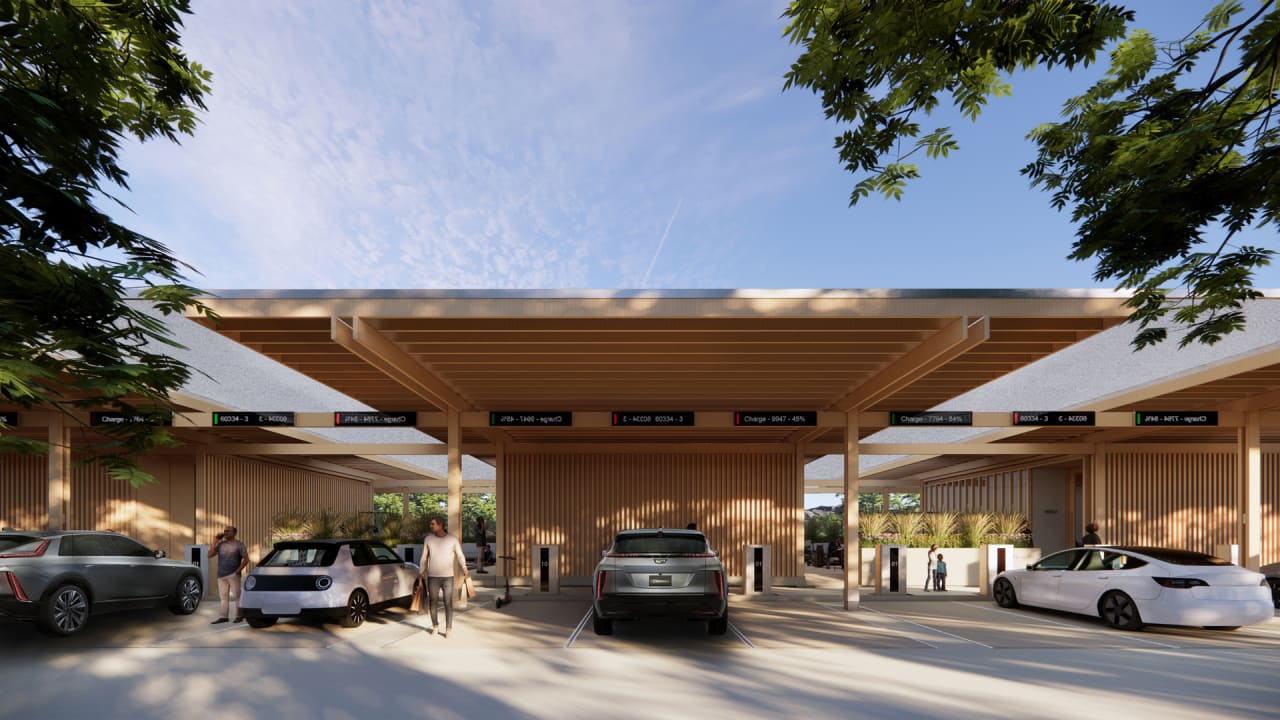
The gas station as we know it is an endangered species. As electric vehicles gradually make up a larger share of cars on the road, entirely new kinds of service stations will be needed to fuel their journeys. A new design competition has come up with a vision for what those stations may look like, and it’s funded by one of the biggest gas station companies in the world.
Parkland, a Canada-based gas station operator with 3,000 locations in 25 countries, is the main sponsor of an international competition to create the electric fueling station of the future. The winning entry has just been announced, and the design envisions a facility where the time it takes to recharge a battery—easily a half hour longer than a typical gas fill-up—is seen as an opportunity to rest, relax, and maybe even explore.
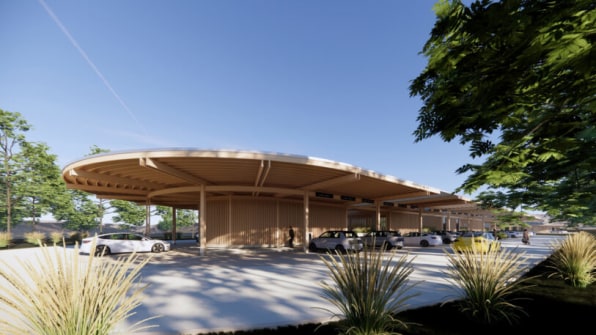
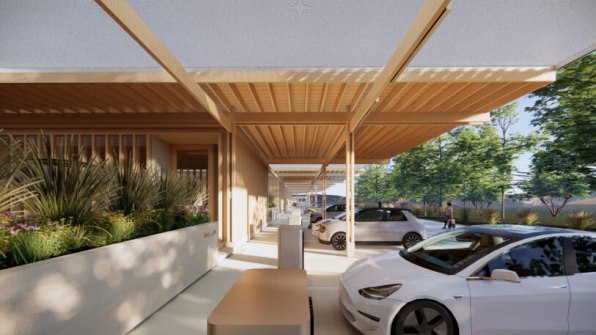
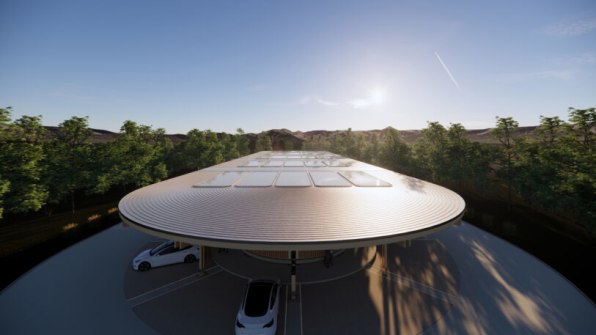
“The building needs to respond quite differently from a five-minute quick fill and drive off,” says Silvester. “It’s got to offer people some sort of destination or unique experience that can keep them entertained. If I was in a car for 40 minutes at a gas station, I’d be pulling my hair out by the end.”

The building Silvester proposes would have sustainable materials like wood and stone and a roof capable of holding solar panels. He says its modular design would make it quick to build and flexible enough to accommodate a wide variety of sites.
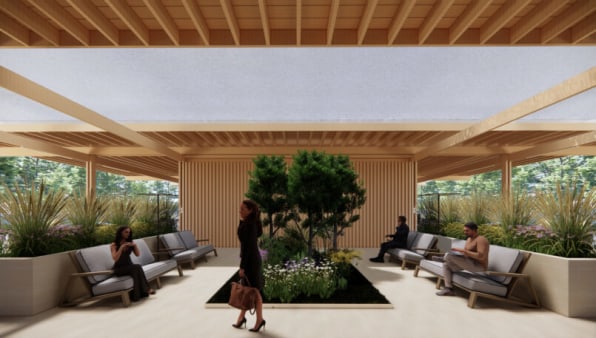
“We wanted to create a bit of EV envy amongst gas-car drivers,” says Di Cara, imagining a family on a road trip driving past one of these stations, and the kids in the back seat saying, “Why can’t we stop there?”
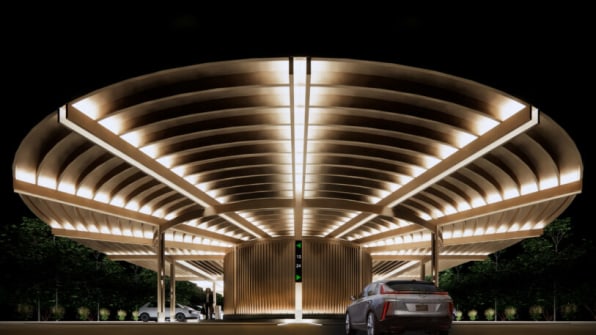
Silvester’s design may be more than just a clever idea. Parkland’s Smart says the company is beginning discussions with Silvester about how the design can begin to be implemented, albeit slowly. The company is in the early stages of its own electric vehicle transition, but has plans to open a network of 25 ultrafast EV-charging stations across British Columbia by midyear. That could be the start of the company’s shift toward meeting the needs of a growing community. Smart says Parkland is beginning to plan out how one of these EV-only charging stations can get built. “In the next couple of years, I think you’ll start to see these pop up,” Smart says.






















